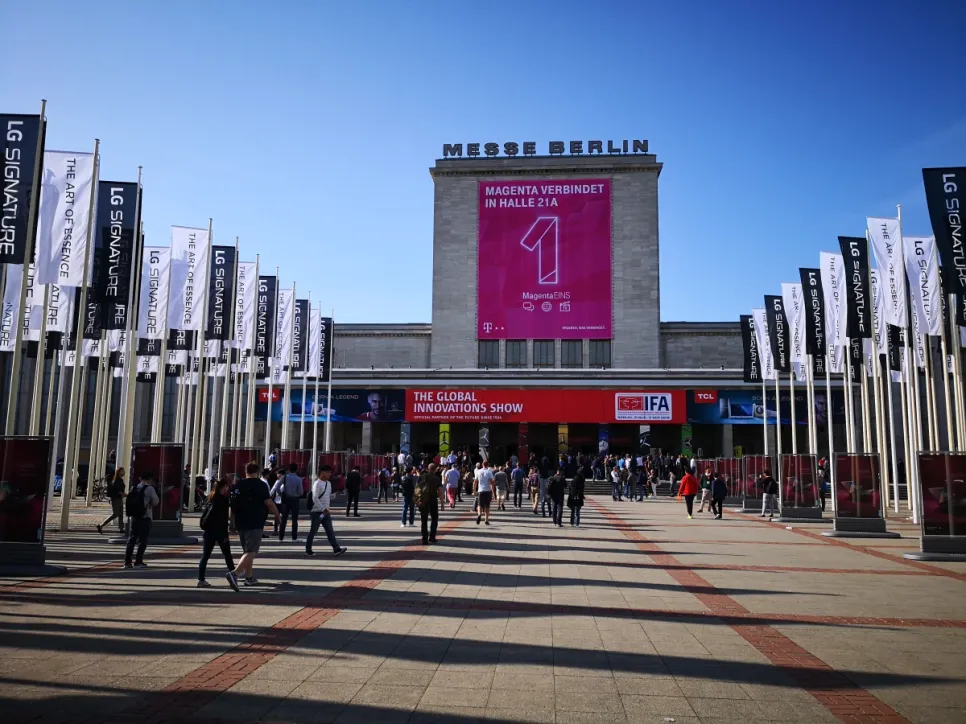PC Market Returns to Growth in 1Q24
Global PC shipments grew around 3% YoY in 1Q24 after eight consecutive quarters of declines due to demand slowdown and inventory correction, according to Counterpoint Research.

In the first half of 2018 e-commerce accounted for approximately a third of the total value of technical consumer goods (TCG) sold globally to consumers, according to GfK. Across 18 European countries though, online shares are still below that mark at currently 25 percent. However, European e-commerce retailers were able to steadily increase their shares over the past years (2015: 21 percent). This is because not all product categories are equally popular when it comes to buying online. This may change as the European online retail sector is undergoing a massive change.
On a regional level, APAC and foremost China were driving global online sales. Chinese e-commerce retailers enjoyed significant double-digit growth at nearly 23 percent. In the first half of 2018, the online share of technical consumer goods sales in China reached over 30 percent. Unlike the US and Europe, where internet penetration levels are at 80 percent or higher in most countries, China’s internet penetration is still low at 55 percent as much of its population is located rurally. However, further investments into China’s infrastructure will set the ground for further growth of internet usage and thus online sales.
As much as internet adoption in China is a great challenge, at the same time it reveals a huge growth potential for China’s e-commerce giants. China today already has the biggest internet community with 773 million internet users in a total population of 1.4 billion, growing year by year. This growth will open doors to new money for Chinese online retailers increasing their global power for investments and expansion into the European market.
In Europe, at least for the start, Chinese e-commerce giants are expected to be focusing on product categories where other competitors have left space or where product categories are lagging behind for online sales. Today’s consumers in the 18 observed European countries are feeling most comfortable buying IT products online (online share: 38 percent) over other product types. However, less popular online category sectors such as Telecommunication (online share: 21 percent), Consumer Electronics (online share: 22 percent) and Small Domestic Appliances (online share: 28 percent) are again showing high levels of online growth in the first half of 2018, making these the product sectors to watch for increasing levels of online sales activities.
For a growing number of tech-savvy, time-poor consumers, shopping from a smartphone or tablet is becoming an increasingly popular way to buy online. For more than every second technical durable goods shopper in 2018, ‘their mobile device is becoming their most important shopping tool’ with a significant upward trend (2015: 40 percent), according to a recent GfK study. Again, the Chinese e-commerce giants are well positioned in the area of m-commerce through many years of experience in their home markets. Buying mobile is already mainstream in China, and for more than 80 percent of all technical durable goods shoppers in China, their smartphone or tablet is the preferred shopping device.
Strong alliances amongst key players in Europe will be able to address these new challenges in the retail sector. Partnering retailers will take competitive advantage of their unique omnichannel selling propositions, allowing them to bring the best on- and offline shopping experience to their customers through new technologies, joint innovation activities, and co-investments into big data analytics. As much as the ongoing changes in Europe can be seen as most disruptive for technical consumer goods retailing, ‘traditional’ retail has not lost its attraction: The percentage of consumers who believe that physical stores today are less important than a few years ago has not changed over time.